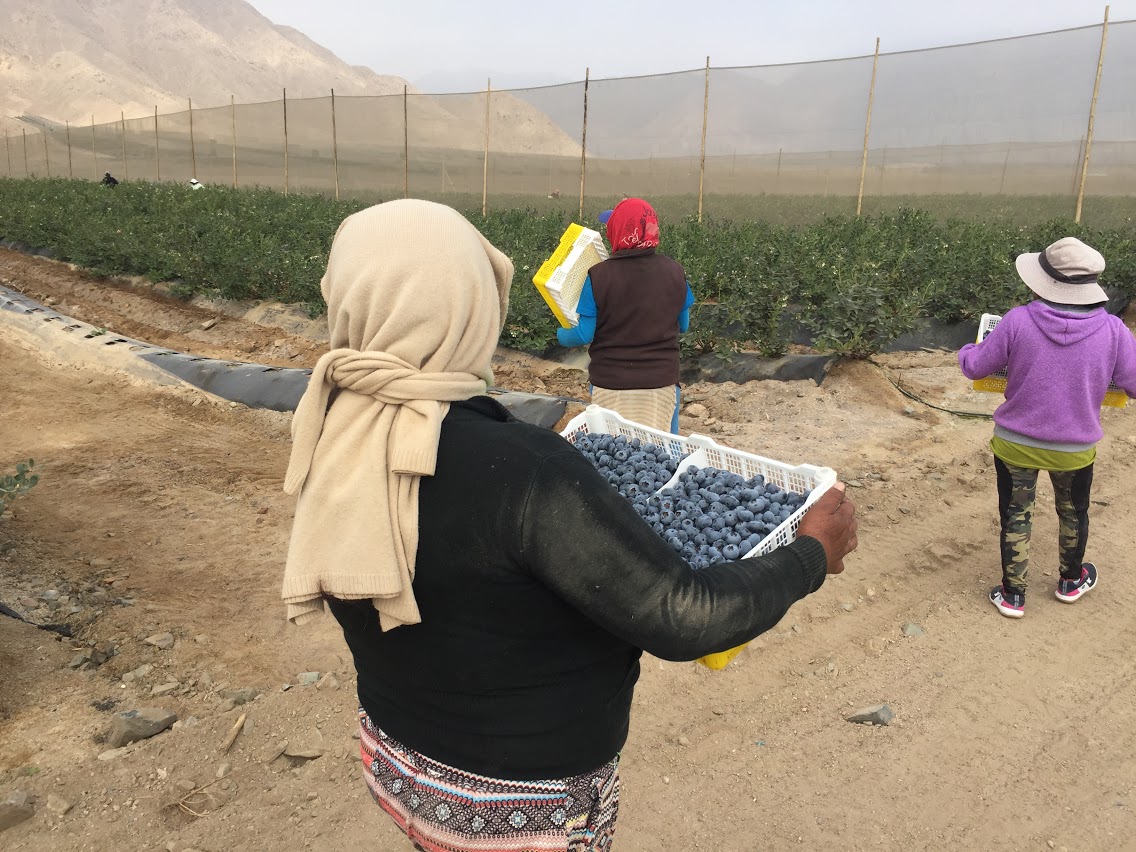

Entrepreneurs
The Legatum Center supports entrepreneurs all around the world through the Fellowships and Grants

Preserve Air
2017 - 2017- Sector:
- Agriculture
- Location:
- Peru
Alvaro Mufarech Rey and Michael Easton, 2018 MIT Sloan MBA candidates, traveled to Peru to understand how blueberry producers are using Preserve Air technology to preserve freshly harvested produce.
This is not your grandmother’s blueberry farm
We woke up at 5:30 am tired from yesterday’s long day of travel and interviews. A quick shower and we were out the door. Today we headed 3 hours north of Lima to meet with Fernando who knew some English and was able to give us a brief overview of the blueberry farm’s operations.
What became very apparent to us was this was not your grandmother’s blueberry farm. We were being shown around a sophisticated farming operation purposely built to feed the world’s hunger for blueberries. Almost every element of the farm was being measured and controlled (as much as you can control the randomness of farming). We climbed up a hill to take in the panorama of the farm. It was incredible. Two-hundred hectares of blueberry bushes neatly organized in rows. Laying the right mix of soil in rows atop of the desert and pumping water with diesel power, life was being pushed into the desert.
Fernando navigated us to a section where they were doing an early harvest and explained that blueberries are the most labor intensive of all fruits to harvest. Each individual blueberry must be delicately picked by hand as not to destroy the protective coating (that white stuff that covers them) that the blueberries create to reduce their decay. At peak season, dedicated workers do different tasks like picking from the bushes, moving full crates to the end of each row, replenishing crates, organizing the crates onto pallets, loading the pallets onto tricycle transporters. Once full, the trikes moved the blueberries to a central climate controlled batching facility which measures the incoming palette, organizes and waits to be loaded onto trucks. The trucks then carry pallets of blueberries to a central packaging and cooling facility that ultimately loads refrigerated 40-foot export containers.
During our conversation, we saw how important it was to reduce dehydration, from the moment the berry is picked is put under shade. Speed is crucial too. It only takes between two and four hours for blueberries to travel from the field to the packing/export facility, much less than the six to eight hours that we had assumed from our prior research. However, from the time blueberries arrive in the climate controlled central building on the field to the time they arrive at the export facility, a one and a half to three hours’ process where they have measured dehydration, the blueberries lose an average of 1.5% of their weight. Even under refrigerated conditions blueberries were still dehydrating at a pretty high rate. Additionally, every delay on the field can cause issues on the back end. They estimate that for every hour the blueberries aren’t in a climate controlled environment, they lose one day of shelf life. To fully understand our value proposition, it is important to study dehydration rates right after the berry is picked, so that’s what we’re working on now…
back
